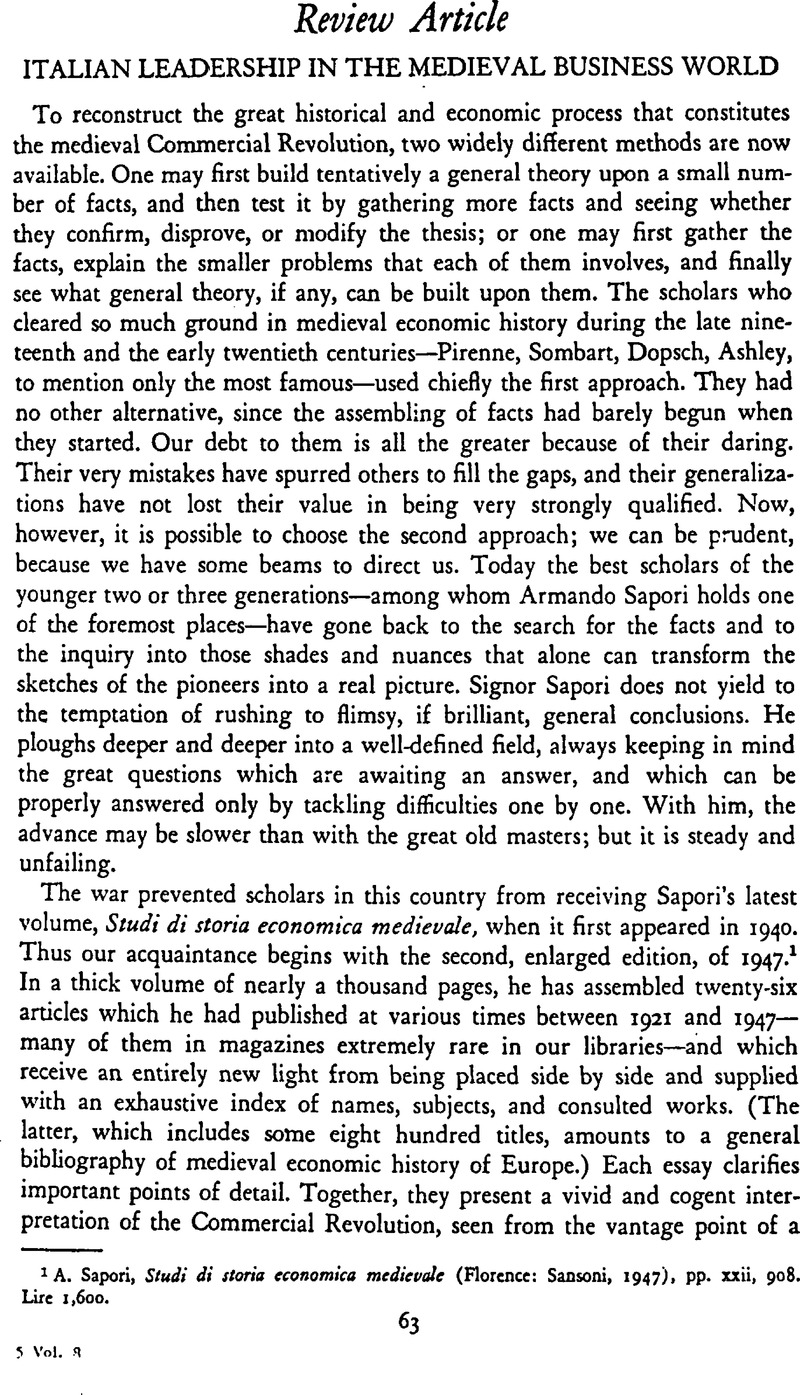Published online by Cambridge University Press: 03 February 2011

1 Sapori, A., Studi di storia economica medievale (Florence: Sansoni, 1947). pp. xxii, 908. Lire 1, 600Google Scholar.
2 Introduction, p. xiii. Armando Sapori was born in Siena and is professor of history in the University of Florence.
3 Sapori, A., La Crisi delle Compagnic mercantili dei Bardi e dei Peruzzi (Florence, 1926)Google Scholar; Una Compagnia di Calimala at primi del Trecento (Florence, 1932)Google Scholar.
4 Namely, I libri di commercio dei Peruzzi (Milan, 1934)Google Scholar; I libri della ragione bancaria dei Cianfigliazzi (Milan, 1947)Google Scholar; Liber Tercius Friscombaldorum (Florence, 1947)Google Scholar.
5 At this point it may be asked whether in our own time most people would not be shocked at seeing a barber earning as much as the president of a great textile mill, or whether blackmarket operations find more sympathy than they did in the Middle Ages.
6 It is worth noting that Abu Ishaq, a prominent Muslim lawyer of the eleventh century, found a similar solution when he stated that it was not forbidden for a borrower to pay more than he had received, provided he did so of his free will. See my section on “The Muslim World” in Cambridge Economic History, Vol. II.
7 A reply by Chiaudano, M., “La costituzione di una societa commerciale a Pinerolo nel 1327,” Bollettino Storico Bibliografico Subatpmo, XLIX (1940)Google Scholar, docs not affect Sapori's statements in any way.
8 To the Tuscan sources cited by Sapori one might add the Genoese and Venetian materials used by Reynolds, Lopez, and Luzzatto, and—from a distant region—the following passage of the King's Mirror, a Norwegian book of the thirteenth century, which has not been sufficiently exploited by economic historians: “If you find that the profits of trade bring a decided increase to your funds, draw out the two-thirds and invest them in good farm land, for such property is generally thought the most secure.”—Transl. L. M. Larson (New York: American Scandinavian Foundation, 1917), p. 86.
9 Three examples, however, will be in order. P. 278, “Filippo II di Valois,” read: “Filippo VI”; p. 585, n. 6, 1. 3, “1310,” read: “1300”; p. 718, “gli Zaccaria di Negroponte,” read: “gli Zaccaria di Scio e Focea.”